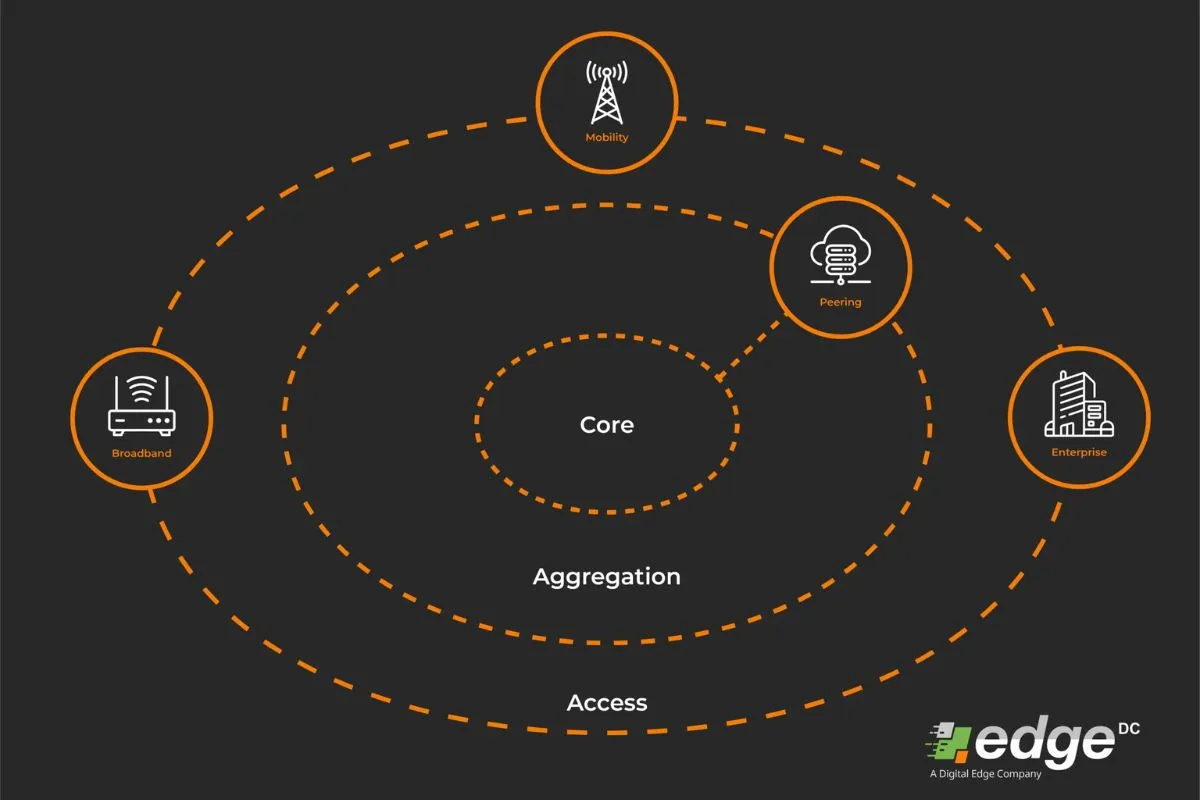When it comes to interconnectivity between networks, efficiency and performance are two very important factors. To optimize the efficiency and performance of a network, we must find the right method to manage them. Network Peering itself is one of the many methods commonly used to manage data traffic to achieve those two factors.
Network peering is sometimes also known as IP Peering, or even just Peering, and so far this network management method is often compared to IP Transit. In this article, we want to take you through getting to know more about Network Peering, starting from the definition, types, and benefits.
Definition of Network Peering
IP Peering is a method for two or more computer networks (operated by an ISP or Network Service Providers) to connect and exchange data directly, without having to pass through the services of a third party.
IP Peering is often chosen for its ability to improve connectivity without having to rely on many other network services, which makes the process and path of data exchange more efficient.
The name “Peering” itself actually refers to an agreement between two parties (ISP or Company) willing to exchange traffic that is mutually beneficial for both parties.

The ultimate goal of network peering is that each party is able to optimize the utilization of network resources while also able to reduce costs for network usage.
Types of Network Peering
For more detailed information about types of network peering, read this article here.
Since it is an agreement, network peering can take several different forms. So far, there are 3 types of peering that we most often encounter, namely:
1. Private Peering
Private Peering is the simplest and most common type of peering whereby two peering partners interconnect via a dedicated IP connection. Private Peering is usually used in Colocation Data Centers through cross-connect service but can also be achieved through virtual connection via Cloud.
2. Public Peering
The second type of peering is Public Peering, where two or more internet service providers are connected through Internet Exchange Point (“IXP”). Through a neutral IXP, peering partners who are open for multilateral peering are able to exchange data without having to cooperate privately. This type of peering is usually free with several providers and content sharing non-dedicated capacity at a neutral interchange (“IX”).
3. Paid Peering
The last type is Paid Peering whereby two networks exchange traffic with an underlying payment to provide direct access to each other’s customers. Paid peering ensures that a dedicated capacity is allocated to the paying party so as to improve customer experience. This type of peering is common between large Internet Service Providers (ISPs) and content providers who require large amounts of traffic sent to their customers.
Benefits of Network Peering
Above we have explained what Network Peering is complete with its types. Then what benefits will we get if we utilize this Network Peering?
1. Efficient Routing
For ISPs or network infrastructure companies, Peering can help them to create more effective and efficient network routes. Through peering, dependence on IP transit which can cause route inefficiencies can be reduced.
2. Reduced Cost
In Network Peering, data exchange routes will be optimized so that ISPs do not need third-party IP Transit when accessing data or content. With Network peering, ISPs can operate at a more affordable cost and reduce prices for network access.
3. Speed of Access
Through peering, ISPs in general are able to reduce the number of hops used to send data to the end destination. This process will allow data to be sent directly without having to go through transit, resulting in shorter distances, and ultimately achieving lower latency and improving access speed.
4. Better Quality
We have mentioned above that with peering, the access speed will become faster and tend to be more stable due to reduction in the distance that Data must be traveled. In the end, this will create better customer experience through lower risk of access failure and improved service quality.
5. Promotes Collaboration
Not only can the peering method solve various problems with the network and operational costs, but this cooperation model can also promote greater collaboration between ISPs and bring various innovations to create a much better internet service.
Peering at EDGE DC
As a Cloud, Carrier, and IX Neutral Data Center, EDGE DC offers Edge Peering Internet Exchange (EPIX) as a primary peering solution that can be tailored to your business needs. By leveraging EPIX, EDGE DC helps ensure connectivity performance and reliability, supporting your business for smoother and greater success. For more information on available peering options, please visit our PeeringDB for EPIX, and contact our team to initiate peering through EDGE DC.

